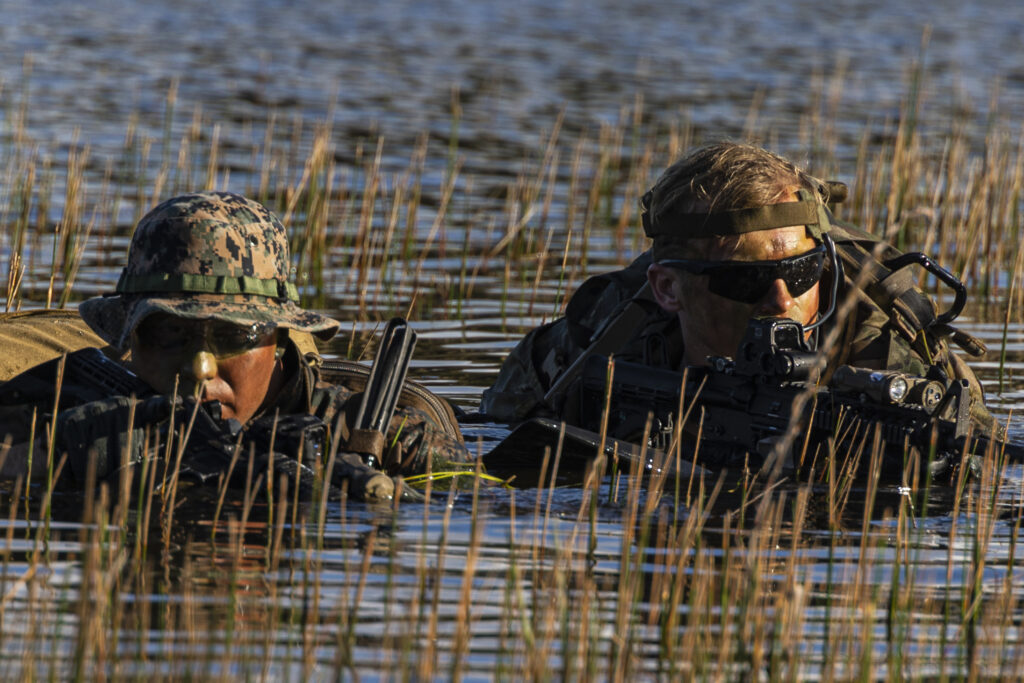
WASHINGTON — The commanding general of the U.S. Marine Corps Warfighting Laboratory and Futures Directorate says overseas bases are an underestimated key to deterring competitors from aggression and coercion against friendly nations and allies in the Pacific region.
The value of strategic basing “deserves more attention in any discussions of deterrence,” Brigadier Gen. Kyle B. Ellison told the U.S. Naval Institute (USNI)’s Defense Forum at the Spy Museum Dec. 6. Overseas bases are “one of the most critical aspects of the deterrence effort, in my opinion,” said Ellison, who is also vice chief of Naval Research in the Office of Naval Research.
Speakers at the USNI event focused on integrated deterrence, one of three ways cited by the 2022 National Defense Strategy to achieve Defense Department goals that include defending the homeland against the growing multi-domain threat posed by the People’s Republic of China (PRC). Integrated deterrence seeks to bring a whole of government approach across services, government agencies, regions, commands and Ally or partner organizations to thwarting competitors’ aggression.
The other paths to attaining Defense goals are through campaigning and building enduring advantage.
“While we modernize our power projection capabilities, we must not lose focus on broadening our stance in the Pacific or hardening our forward installations,” Ellison said. “The value of our overseas bases cannot be overstated and our investment in the resilience of these overseas locations will have a far-reaching impact on our ability deter.”
Another aspect of integrated deterrence is a stand-in force operating inside a weapons engagement zone, a point that emerged from the Marines’ Force Design 2030 plan. While China has increased the challenges of anti-access/aerial denial over the mainland and created stand-off areas and protective bubbles in the littorals, Ellison said U.S. Allies and partner stand-in forces “will survive in this high threat environment” because they are “nimble, moving often and avoiding enemy intelligence collection efforts.”
The stand-in force could include, not just Marines, but elements of the Navy, special operations, Allies and partner nations. To support the consistent persistence of the stand-in force, Ellison said the Marines were reducing their sustainment burdens and maximizing maneuverability by “reducing logistics demands across the life cycle of the stand-in forces. This will give them a position of strength and advantage in coordination with Allies and partners.”
- Shall We Play a Game? Winning Isn’t the Point, Experts Say - April 5, 2023
- U.S. Goal: Maintaining Extended Presence in Arctic’s Harsh Environment - April 4, 2023
- Joint, Combined Exercise Shows Marine Littoral Regiment Idea is on ”Right Track’ - February 24, 2023






